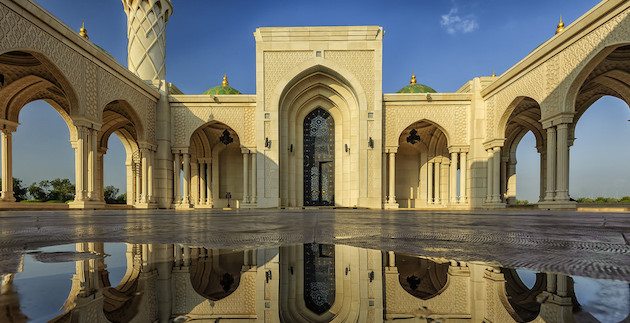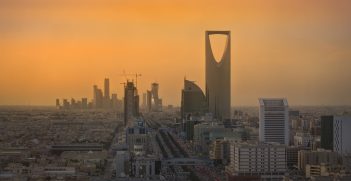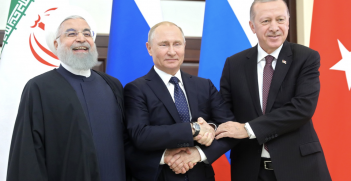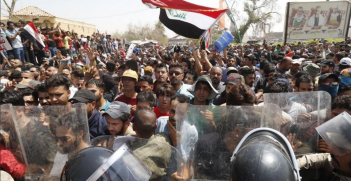Succession Uncertainty in Oman Threatens the Switzerland of the Middle East

In the increasingly unstable Middle East, the one country that has maintained its neutrality has been Oman. But new uncertainty about the sultanate’s leadership succession means there is a risk it may not remain the valuable backchannel negotiator the West has relied upon.
While several Arab states of the Persian Gulf are embroiled in a diplomatic quarrel against Qatar, there is one Gulf state that many commentators overlook. Oman, located on the Arabian Peninsula, is the Switzerland of the Middle East. Its neutral foreign policy, independent of its Gulf Cooperation Council (GCC) neighbours, has seen it become an important regional actor in the Middle East.
Unlike other Arab states in the Gulf ruled by large royal families aimed at solidifying their familial legitimacy, Oman is ruled by Sultan Qaboos who has no heirs and therefore no clear line of succession. While Oman has remained one of the most stable states in a turbulent region, the uncertainty over who will succeed the sultan and whether his successor will be able to assert legitimacy remains a concern for many in the Middle East.
With the ongoing conflict in neighbouring Yemen and the rise of al-Qaeda on the Arabian Peninsula, Oman’s leadership transition will be carefully watched, not only by academics and commentators but also regional powers and Western countries, who all have key strategic interests in ensuring that Oman remains stable.
Domestic challenges
Sultan Qaboos has ruled Oman since 1970 when he overthrew his father, Sultan Said bin Tamur. Although Oman had made concessions to export oil to the United Kingdom and other countries, the conservative and reclusive Sultan Said bin Tamur provided little development for the people of Oman resulting in extreme poverty. This culminated in the 1970 coup in which his son Qaboos with the backing of the United Kingdom took control of the country.
Since 1970 Oman has undergone vast modernisation and development, resulting in the once poor and isolated country ridding itself of poverty and destitution. With sufficient oil revenue and support from the United Kingdom and United States, Sultan Qaboos began rebuilding the state through its civil society and unified Omani identity-building, foreign policies and resource management. While the sultan has established a stable state, his rule has not been without its challenges.
Although it remained relatively unharmed by the Arab Spring in 2011, Oman did witness several protests demanding political reform and improved living conditions. To combat political unrest, the sultan initiated several reforms and policies including changes to legislative processes and providing citizens with economic assistance. However, these reforms have neither satisfied those calling for political reform nor demonstrated the sultan’s willingness to cede control. Civil society is still managed by the sultan, thus providing little space for political activity to successfully emerge as a serious actor in Oman’s political discourse.
Foreign policies
Oman’s foreign policies have put it in a unique position thanks to its neutrality and independence from the mainly Saudi-led GCC. This neutrality within the GCC has allowed it to mediate between member states as well as the GCC as a whole. Along with Kuwait, Oman has refused to follow the Saudi-led policy of cutting ties with Qatar and instead has offered to assist in mediating between the states involved. Furthermore, it has maintained its own foreign policy path towards regional powers and conflicts, much to the ire of Saudi Arabia.
It has sought to strengthen ties with Iran against the wishes of some Arab states in order to ensure stability in the Strait of Hormuz, a vital trading choke point jointly controlled by Iran and Oman. Its Syria policy has remained neutral, being the only GCC member to maintain relations with the Syrian government. While other GCC states have armed various rebel factions in Syria, Oman has taken the diplomatic route in offering to mediate between the Syrian regime and opposition parties through high profile delegations and meetings.
While Oman borders conflict-riddled Yemen to the West, it remains the only GCC member to not have joined the Saudi-led Operation Decisive Storm. Instead, Muscat has once again illustrated its neutrality by offering to mediate between warring factions, angering Riyadh, which has accused Oman of turning a blind eye to Saudi interests in the Yemen conflict.
It was only in December 2016 that Oman decided to join the Saudi-led Islamic Military Alliance to Fight Terrorism, a US-backed anti-terrorism coalition with the purpose of defeating radical elements in the region such as the Islamic State and al-Qaeda. While Iran has been intentionally left out of this agreement, Oman’s decision to join the coalition was not to move away from Iran, but rather to signal to its Arab neighbours that it is committed to fighting radicalism in the region.
Oman has maintained an important strategic relationship with Iran. Muscat has acted as a backchannel between Washington and Tehran, mediating several negotiations including the release of three American hikers in 2011 and playing a vital role in the nuclear deal between Iran and the P5+1. The latter once again angered Riyadh, which viewed this as dismissive of the GCC’s interests.
Oman has also developed strong security relations with Iran. The two countries have held annual joint naval exercises in the Strait of Hormuz and the Sea of Oman to increase regional cooperation and ensure free flow of oil out of the Gulf, which is vital to both states’ national interests. This also puts Oman in the unique position of ensuring that no conflict breaks out between Iran and its Gulf neighbours or the United States that would obstruct the free flow of trade out of the Gulf.
This is vital for the greater international community, especially the United States and the United Kingdom, which both have strong historical, economic and security ties with Oman. For example, Oman acted as a staging post for troops during the First Gulf War and the Invasion of Iraq in 2003. While Oman remains a stable state under Qaboos, the United States and United Kingdom will closely observe any future leadership transition, and will undoubtedly act in a manner that safeguards their own interests in the region.
Succession
When the sultan dies, the leadership succession will affect Oman’s stability and role in the region. The extent to which it will be affected remains unclear. Qaboos has no heirs and has not publicly groomed any extended family members as a future successor.
Several mechanisms have thus been explored. While the Basic Law of the State stipulates several criteria for a successor, it has been rumoured that the sultan has written down several names in a secret letter. Commentators suggest three likely candidates, each a cousin of the sultan: Assad bin Tariq, a businessman; Haitham bin Tariq, the Minister of Culture; and Shihab bin Tariq, a retired commander in Oman’s navy. None of the possible candidates have the popular support of the masses that the sultan enjoys, nor do they have the legitimacy needed to ensure a smooth leadership transition.
This uncertainty over the legitimacy of a new leader gives rise to fears of radical elements taking advantage of the precarious leadership transition or a political power vacuum with contending factions within the Omani government. Regional actors such as Saudi Arabia and Iran, which both have keen interests in guaranteeing that any future sultan benefits their respective objectives in the region, will closely watch the possible instability that may occur.
Oman is in a unique position to push for stability in the Middle East through its neutral position. Its independent foreign policy has seen it partner with conflicting actors in the region, much to the irritation of Saudi Arabia. However, the uncertainty over its leadership succession and the possibility of a power vacuum may see Qaboos’ legacy come undone.
Will McEniry is a former intern with AIIA Victoria and AIIA National Office. He continues to contribute at AIIA’s National Office.
This article is published under a Creative Commons Licence and may be republished with attribution.





